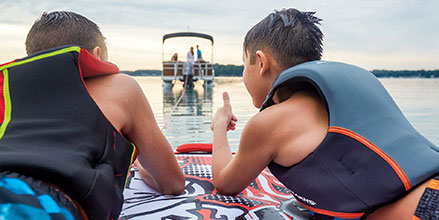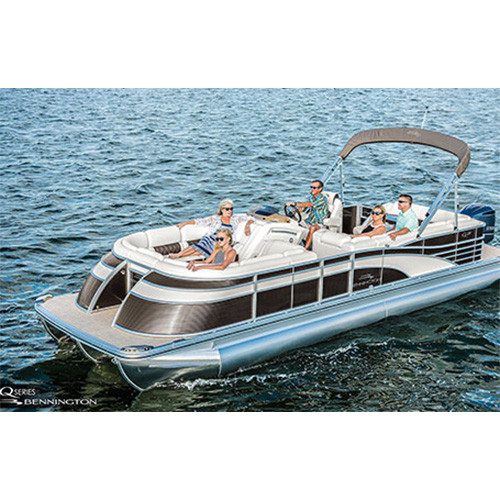
Choosing the Right Life Jacket
As most pontoon boaters know, state and federal regulations require all boats to have personal flotation devices (PFDs, a.k.a., life jackets) for every person aboard. On all federal and many state waters, life jackets must be worn at all times by children under 13, unless they're below deck or inside a cabin -- a situation that never applies on a pontoon boat. And while some states don't require the PFD to be worn by children at all times on state waters, it is always a good idea and highly recommended by virtually all boating safety experts.
Life jackets come in many shapes and sizes and are designed for different activities. Some are made for water-based activities and designed to be worn for extended periods of time; others are simpler and used only in emergencies. Since you'll have children on your pontoon boat for hours at a time, get the kind that looks good and that they can wear comfortably.
The first step to choosing a life jacket for your child is to consider how it will be used. Will the kids be tubing, water skiing, canoeing or doing any other water-based activities? Look into a Type III life vest, which is more adjustable so it can be worn comfortably for hours and won't be cumbersome while swimming.
If your child isn't a strong swimmer, go for a Type I life jacket that provides more floatation and is designed to keep their head out of the water. A Type I jacket is also the best choice for any situation with rough water or the chance of delayed rescue.
The old-fashioned orange "horse collar" life vest is a Type II PFD. They are inexpensive and will often turn an unconscious swimmer face-up in the water. However, they are bulky, awkward, uncomfortable, and they're decidedly dorky-looking. Most children will rebel at them, and a PFD that isn't worn does no good at all.
Check the label on the inside of the life jacket for the size and weight rating. Once you have one that matches your child's approximate size, have them put it on, connect all the fasteners, and pull the adjustments tight. Have your child hold their arms above their head while you gently pull up on the shoulder straps. If the life jacket shifts up over their chin or face, a smaller size is required.
This is not the kind of purchase where you should buy a larger size for your child to grow into. If your child is wearing a life jacket that is too large for them, they're at risk of slipping right out of it. This isn't to say that you'll be buying them a new life jacket every year as they grow; life jackets are designed with a moderate range of weights and body sizes in mind.
Once you've made your purchase, have your child wear the PFD in shallow water under your supervision to make sure it works as intended before you go out on the boat. Depending on where you purchased the life jacket, you may be able to exchange it after this test if it turns out not to be the right choice. Ask about this prior to purchase.
Boating safety is important to all of us at Bennington Marine. We want all of our customers to practice safe boating, especially with their children.












